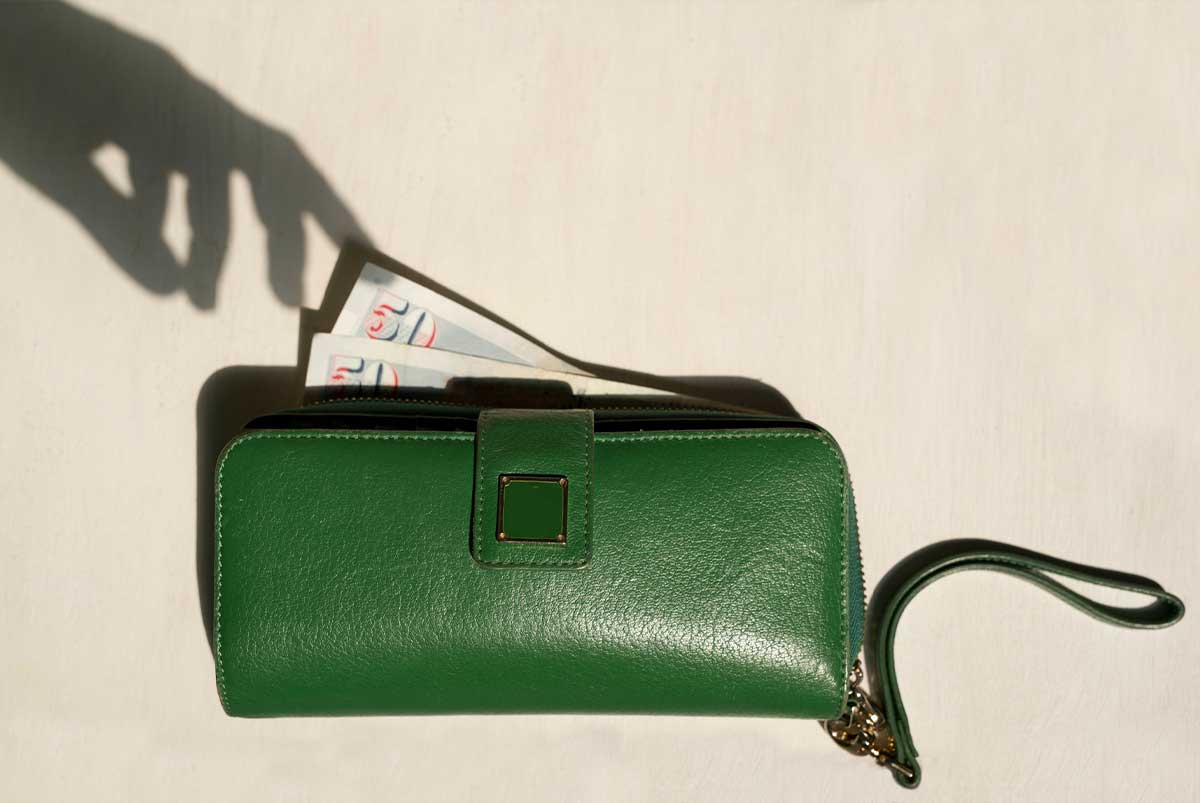Fraud and identity theft are big problems. Over three million consumers filed fraud and identity theft complaints last year alone, according to the Federal Trade Commission.
Fraud vs. Identity Theft
Fraud and identity theft are both crimes. But different people use these terms in different ways.
Often, credit-related fraud occurs when someone uses your existing credit card accounts to make unauthorized purchases. These criminals may be using a physical credit card that has been lost or stolen, or simply the credit card number and other information on the account. (Other examples of fraud may include fraudulent bank account transactions, income tax fraud, utilities fraud, and more.)
Identity theft is more difficult to identify unless you monitor your credit reports regularly. Stopping identity theft is even harder and involves notifying authorities about suspicious new accounts, contacting the credit bureaus, and possibly freezing your credit reports.
True identity theft occurs when a fraudster pretends to be you and uses your personal information — your name, address, Social Security number, etc. — to open lines of credit in your name. If you don’t check your credit reports often, you may find out that you’re a victim of identity theft the hard way. For example, you might start receiving bills and other mail related to accounts that you did not open. Alternatively, you might apply for financing and be denied due to credit problems you didn’t know existed.
Like many financial problems, the best way to deal with fraud and identity theft is to be aware of the danger and take steps to prevent it.
What Should I Do Right Now if I’m a Victim of Identity Theft?
If you’ve already had your identity and your credit preyed upon by a scam artist, then the time for preventative action has passed.
Now it’s time to play defense and do some damage control. Thankfully, there are extensive protections afforded to identity theft victims under the Fair Credit Reporting Act (FCRA). The following are four very important steps to follow for anyone who has been a victim of identity theft.
1. Prevent further damage
The most effective way to prevent any additional fraudulent accounts from being opened in your name is to place a credit freeze on each of your three credit reports. You can also use credit locks to achieve a similar effect, though these may come with fees or strings attached.
Credit freezes are free, thanks to the federal Economic Growth, Regulatory Relief, and Consumer Protection Act of 2018. However, it’s up to you to request a credit freeze with each of the three major credit bureaus (Equifax®, Experian™, and TransUnion®) individually. Fraud alerts are another option, but credit freezes are a stronger method of protection.
A credit freeze takes your credit report out of circulation and prevents new creditors from receiving a copy of your report without your permission. In fact, after placing a credit freeze you actually have to “thaw” your credit reports, courtesy of a PIN you are issued by each credit bureau, before you apply for new credit. A credit freeze will make it nearly impossible for a fraudster to open any additional accounts in your name.
Although credit card fraud isn’t the same as identity theft, you should still contact the card’s issuer right away to report fraudulent charges. You won’t be held liable for fraudulent charges if you report them promptly. However, it may take some time to resolve the problem (depending on the situation and the issuer).
2. File an identity theft report
Filing an identity theft report should be near the very top of your priority list if you’re a victim of identity theft. Any fraud report or police report which is officially filed with a law enforcement agency is considered an identity theft report. The report you file will be very helpful in getting any fraudulent accounts or collections removed from your credit reports.
Start by filing an identity theft report with the Federal Trade Commission. Head to IdentityTheft.gov, then click “Get Started” to begin. The site will guide you through the rest of the process. You’ll be asked for information related to the incident, typically including, but not limited to:
- How you believe your information was acquired
- How your information was used
- Details about the identity theft, such as information about fraudulent accounts that have appeared on your credit reports
- Personal and contact information
- Suspect information (if you know who stole your identity)
Once you’ve submitted as much of the requested information as possible, you’ll get a custom identity theft recovery plan. Each step will feature detailed instructions, and you can tweak the plan and track your progress on the IdentityTheft.gov website.
The typical FTC-provided recovery plan may be able to help you:
- Complete an online form or call to report the situation, which will generate your FTC Identity Theft Report
- Visit your local police department with a copy of your Identity Theft Report, along with other proof of the identity theft
- Prevent debt collectors from collecting on debts you don’t owe
- Replace any necessary government-issued IDs
- Clear your name of criminal charges
- Contact other companies that may need to know about the crime, such as utilities or loan servicers
- Deal with special forms of identity theft, like tax identity theft, medical identity theft, or child identity theft
3. Contact the police if necessary
Because identity theft is a crime, it may feel natural to report the incident to the police right off the bat. But filing a police report is not always necessary. You’ll want to submit an identity theft report to the FTC first regardless.
Once you’ve filed your report at IdentityTheft.gov, your recovery plan should let you know whether you should contact the police, depending on your situation.
Bring your FTC report to the station if you’re planning to file a police report. It’s a helpful measure of legitimacy.
Something to keep in mind, however, is that police typically have a lot going on. If the police aren’t interested in taking your report you can also try contacting your state attorney general. As long as you notify the FTC of the identity theft, the agency will give you a set of instructions to follow to help protect yourself now and in the future.
4. Dispute fraudulent/suspicious accounts with the credit bureaus
If the fraudulent accounts show up on your credit reports, as they often do in the case of true name fraud, you’ll want to submit disputes to the three major credit bureaus.
Include a copy of your official identity theft report, either from the FTC or your local police department, along with your disputes. Per the FCRA, the credit bureaus have to block any fraudulent accounts from your credit reports within just four short business days.
If the accounts can’t be verified they’ll be removed from your credit reports, but take note that bill collectors may still be coming after you for payments. The accounts won’t be on your credit reports, but that doesn’t mean they’re removed from all records, everywhere.
You also have the right to request more information about any fraudulent accounts on your credit report (like copies of applications, etc.) thanks to section 609 of the FCRA.
Steps To Take After Identity Theft or Fraud
Identity theft can wreak havoc on your credit scores and your overall financial wellbeing, but that doesn’t mean it’s the end of the world. Credit card issuers typically adhere to $0 fraud liability policies when you report unauthorized charges quickly. In the case of identity theft, as long as you file a report with the FTC, you shouldn’t find it too difficult to dispute accounts that are genuinely fraudulent.
- Monitor your credit reports and keep an eye on account statements: Take the time to look over your three credit reports periodically for anything suspicious. You can get free credit reports from each bureau once every 12 months at AnnualCreditReport.com. Through April 2021, you can download free weekly reports from the same website in response to the Coronavirus crisis. Plus, don’t toss aside the bills and account statements you receive. If you discover questionable charges or any unusual activity on your existing accounts, contact your creditor and confirm whether the charge is valid.
- Keep your cards secure: Credit cards are targets for criminals, so it’s important to learn good habits to keep your personal information private. Don’t carry pictures of your credit cards around in your phone and keep your physical cards either locked up in a safe place at home or in your wallet. If you still receive paper statements, be sure to store them in a safe place or shred them before you throw them away.
- Use virtual credit card numbers: Check with your issuer to see if it provides virtual credit card numbers. These are like digital versions of credit cards. They’re often used when shopping online to help prevent credit card fraud and identity theft. If your virtual card info is compromised, you can easily cancel it without affecting your actual card account. On top of their security benefits, virtual cards may allow you to set specific expiration dates and spending limits, and they’re sometimes tied to just one merchant.
The Short Version
- Credit-related fraud occurs when someone uses your existing credit card accounts to make unauthorized purchases
- Stopping identity theft is even harder and involves notifying authorities about suspicious new accounts, contacting the credit bureaus, and possibly freezing your credit reports
- There are extensive protections afforded to identity theft victims under the Fair Credit Reporting Act (FCRA)




